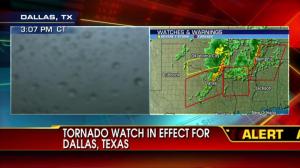The National Safety Council offers these suggestions to help make your holiday season merry and safe.
Decorations
Wear gloves while decorating with spun glass “angel hair.” It can irritate your eyes and skin. A common substitute is non-flammable cotton. Both angel hair and cotton snow are flame retardant when used alone. However, if artificial snow is sprayed onto them, the dried combination will burn rapidly. When spraying artificial snow on windows or other surfaces, be sure to follow directions carefully. These sprays can irritate your lungs if you inhale them.
Fireplaces
You should not try to burn evergreens or wreaths in the fireplace or in a wood stove to dispose of them. They are likely to flare out of control and send flames and smoke into the room. Also, do not burn wrapping paper in the fireplace because it often contains metallic materials which can be toxic if burned.
Candles
Never use lighted candles near trees, boughs, curtains/drapes, or with any potentially flammable item.
Toys & Gifts
Be especially careful when you choose toys for infants or small children. Be sure anything you give them is too big to get caught in the throat, nose or ears. Avoid toys with small parts that can be pulled or broken off. If you are giving toys to several children in one family, consider their age differences and the chances that younger children will want to play with older kids’ toys.
caught in the throat, nose or ears. Avoid toys with small parts that can be pulled or broken off. If you are giving toys to several children in one family, consider their age differences and the chances that younger children will want to play with older kids’ toys.
Older Adults
Select gifts for older adults that are not heavy or awkward to handle. For persons with arthritis, make sure the gift does not require assembly and can be easily opened and closed. Choose books with large type for anyone with vision impairment.
Plants
Small children may think that holiday plants look good enough to eat. But many plants can cause severe stomach problems. Plants to watch out for include: mistletoe, holly berries, Jerusalem cherry, and amaryllis. Keep all of these plants out of children’s reach.
The holidays often mean preparing large meals for family and friends. Wash hands, utensils, sink, and anything else that has come in contact with raw poultry. Keep in mind that a stuffed bird takes longer to cook. For questions concerning holiday turkey preparation and cooking call the USDA Meat and Poultry Hotline at 1-800-535-4555. Refrigerate or freeze leftovers in covered shallow containers (less than two inches deep) within two hours after cooking. Date the leftovers for future use.
Alcohol, Parties & Driving
Being a smart party host or guest should include being sensible about alcoholic drinks. More than half of all traffic fatalities are alcohol-related. Use designated drivers, people who do not drink, to drive other guests home after a holiday party.
fatalities are alcohol-related. Use designated drivers, people who do not drink, to drive other guests home after a holiday party.
Stress
The holiday season is one of the most stressful times of the year. You can’t avoid stress completely, but you can give yourself some relief. Allow enough time to shop rather than hurry through stores and parking lots. Only plan to do a reasonable number of errands. When shopping, make several trips out to the car to drop off packages rather than trying to carry too many items. Take time out for yourself. Relax, read, or enjoy your favorite hobby at your own pace.



















